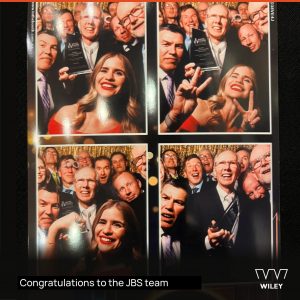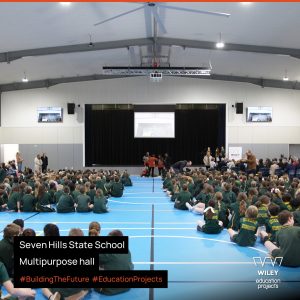
- Industry Type: Industrial Manufacturing, Warehousing, Offices
- Author: Andrew Newby
- Service Area: Advice, Design
- Date:
ILLUMINATNG THE WAY
We all strive to make the most of every dollar spent without compromising quality, function, safety, reliability, maintainability and the environment. This doesn’t mean cutting corners! It means carefully considering and prioritising all the inputs, outputs, constraints, functions, capital and lifecycle costs of your project and then matching the most cost-effective solution to this set of challenges.
The greatest potential for savings and functionality occurs in the early stages of design solutions.
There are new lighting systems being developed in Europe and USA that are challenging the way we will design and build our food and beverage facilities in Australia in the future. We have had it good in Australia with one of the lowest electricity costs in the developed world, resulting in lighting systems being selected more on convenience and capital cost rather than efficiency. This trend is simply no longer a viable, sustainable option.
DRIVERS FOR CHANGE
The Building Code of Australia (BCA) is leading a change in the lighting industry, limiting the maximum watt usage per square metre for specific purposes. In Australia, it is challenging to remain under these strict levels and will only continue to become harder as more stringent requirements are phased in.
Leading multinational companies, including McDonalds, are pressuring their suppliers towards energy efficient products and environmental sustainability within their manufacturing and supply chain.
The cost of electricity is expected to double in the next few years—a much sharper rise than company profits. It is essential that companies consider energy savings more seriously in the design phase in order to reduce long-term operating costs. Lighting is one area where there is a large degree of inefficiencies and unnecessary long term costs that are often not reviewed regularly. The good news is that there are new technologies being developed all the time to counter these inefficiencies in food processing facilities.
CHALLENGES
Until now, there has been little incentive to allow for expensive light fittings in order to save power, particularly with operating costs being tax deductible. The approach has been to literally flood production areas with light. This approach requires little consideration of lights matching the operational layout within each area. Many would argue this approach is necessary, as it provides flexibility for operational layouts to change. The drivers for change will challenge this conventional thinking.
CONSIDERATIONS
Understanding your daily operational requirements.
Knowing what happens inside each area of your production cycle is critical to successful lighting design. This is a common failure of developers who are renting an industrial building. The lighting is minimal to start with and needs updating to meet each tenant’s fit-out requirements.
Obstructions—think about spaces in 3D.
Food facilities often have high level obstructions such as ventilation ducts and air socks, overhead conveyors, walkways and pipe gantries which block lighting. In these cases, lowering the height of the lights or adding supplementary lights will be a requirement. This can be a challenge within food and beverage processing facilities where hygiene and clean down are equally as important design considerations. Although warehouses do not require the same high level of considerations when selecting the optimal lighting requirement, positioning of lighting and the selection of the correct fittings are important factors.
Light positioning should be designed to suit rack layouts, aisle positions and order picking methods and locations, while fittings for aisles should have asymmetric beams and good vertical illumination.
Reflectivity—white is good.
The off-white insulated panel is excellent for reflecting light, whereas stainless steel is quite poor. It is important to also think about what goes in each room as part of your overall operation. There was a case where the client approved the lighting in the warehouse while the racking system was empty. The racks were then filled with dark boxes and the effectiveness of the lights was immediately and dramatically reduced. Something this simple can have a dire effect on your production effectiveness and lead to costly refits.
Access—can the lights be easily accessed for lamp replacement?
Take time with your design when placing your lights, further costs will be incurred if you have to shut down areas of your operation every time lamps need replacement or maintenance.
New generation lights are energy efficient and longer lasting. The cost of replacing lamps is far higher than the initial cost of the lamps themselves. The longer the life of the product — the lower the maintenance costs are in the long term. Simply put – Don’t settle for cheap lamps with a short lifespan.
Re-strike time – equates to lost productivity.
There are cases where retrofitting new generation lights have produced savings. In a high occupancy room, new generation lights with a re-strike time of 5 to 6 minutes replaced older metal halide lights which had a 20 minute re-strike time. This meant when the lights went out the staff didn’t. They were back to work being productive within minutes rather than taking a break. 20 minutes of lost production is not a great deal to consider in an isolated case, but consider the cost over time if this occurs regularly.
Installations in polystyrene panels – fire risk.
Lights can be surface mounted or recessed into panels, depending on room temperatures and other requirements. Caution and experience is required to ensure correct installation, as lights can become very hot and polystyrene has a low heat resistance.
Each area of your production carries its own unique considerations such as room temperatures (freezers and blast freezers), waterproof fittings and risks such as dust explosion.
TRENDS
In Europe where electricity is expensive, the existing trend is for lamps with high light output for the energy input that have a much longer life. Metal halide lights have been a popular choice for the Australia food and beverage industry as they are efficient and provide a good white light — important for quality control. There has been however, a swing back to fluorescent lights in Europe.
Linear fluorescents have multiple lights so if one fails it has little effect on the overall light level and can be left until it can be safely replaced. Fluorescent lamps having a life span of around 50,000 hours are now available at a premium price but delivering an overall saving due to reduced labour and scaffolding costs. Fluorescent high bays occupy a large area and can be challenging where space is limited. Fluorescent lighting is probably best used for task lighting rather than flood lighting.
LED lighting is being used in low temperature areas such as blast freezers and in areas where lamp replacement is difficult and expensive. LED fittings are still an expensive option but have the advantage of operating in minus 40 degrees C and offer a very long lamp life. This is ideal where access is difficult as the lamps may last up to 5 years, rather than 1 year. As development costs are amortised and LED lamps become even more efficient, this type of lighting will become more common.
Two level control metal halide lights are being used in warehouses where there is low occupancy or periods of no movement in particular zones. The lights dim to around 30% with a reduction in energy use. They light up once a motion detector is triggered by people, forklifts or order pickers entering the space.
Daylight harvesting means the lights are matched to natural light levels. This approach is not optimal for food industry production. Experience has shown that the variation between natural and installed lights can be annoying for occupants. Natural lighting is best suited to warehouses, rather than high occupancy areas or temperature controlled zones where natural light can introduce heat and may create condensation. An added bonus of efficient lights is that the reduced output heat from the lamps reduces the heat load within temperature controlled rooms — significantly reducing cooling costs.
Lamps are being manufactured with a wider choice of wattage. This allows designers to choose fittings closer to actual requirements. Previously, although it exceeded requirements, a 400W fitting would be selected due to lack of choice. New technology metal halide in lighting products allows for 350W or even 300W lamps to be used in lieu of 400W and still meets design lighting levels, therefore reducing energy use.
TAKE AN INTEREST
Get involved in how you light your facility. There are always risks and challenges in any system change or refit, your best defence against getting lost in the dark is by undergoing thorough planning and research early in the design stage. This avoids the expensive task of upgrading or replacing later and reduces high running costs, as electricity costs increase.
Ensure you carefully consider of all the factors and their possible solutions from both a short and long term viewpoint.
Take time to source and purchase quality product that compliments and enhances your existing facility and maximises flexibility for any future changes. Rather than flood lighting, look to see if better results can be achieved with less lights and lower wattage Remember that running costs of the facility over its life span far outweighs the initial cost, so don’t be fooled by low prices or alternative tender options where less efficient lights substitute high quality and efficient lights.
Finally, seek out experienced qualified people to install your new system who offer solid support and perform ongoing testing and maintenance.
Lighting is a science. Decisions made in this field effect efficiency, compatibility and workplace health and safety to name a few. Invest time in your research, and get the right advice from an expert early in the design phase to achieve the best value from your lighting system for years to come.
About the author
Andrew Newby is the Business Development Director at Wiley and can be contacted on:
1300 385 988 or email connect@wiley.com.au.
Further information
The Australian Building Codes Board (ABCB) is a joint initiative of all levels of Australian Government and includes representatives from the building industry.
http://www.abcb.gov.au/index.cfm?objectid=E689D721-B6C9-605B-DE1D813E4CDA3339
Thorn lighting website – resources page
http://www.thornlighting.com.au/au/en/res_overview_f.htm
Further Reading
Good overview of Factory lighting supplied by SA Government.
http://www.dtei.sa.gov.au/__data/assets/pdf_file/0019/15661/com_factorylighting_web.pdf
Download to read full article
To read this document you will need Adobe Reader


